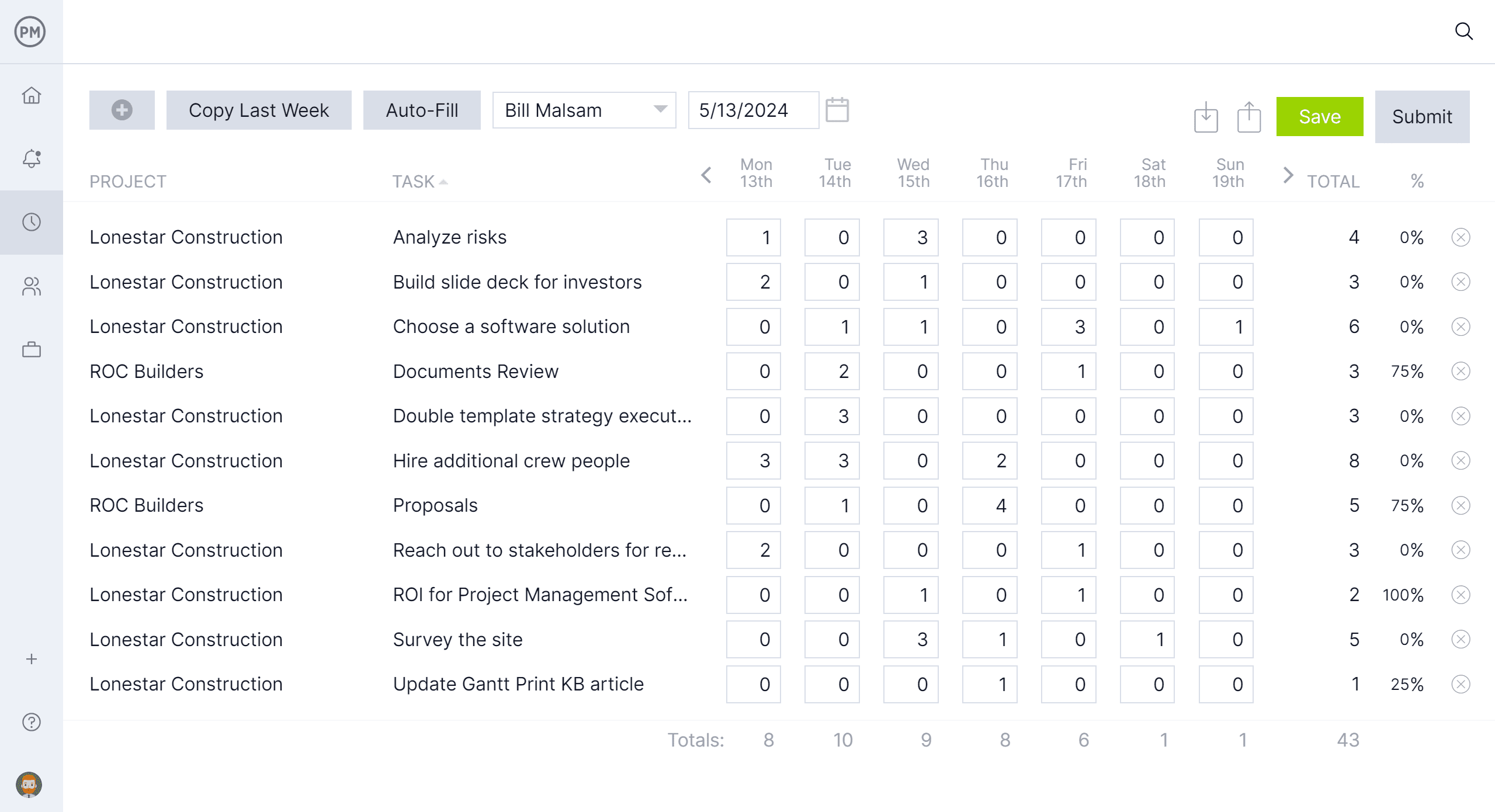Construction monitoring is a critical component of project success. Whether you’re managing a small renovation or a multi-million-dollar development, tracking progress ensures that work aligns with the plan. It involves overseeing quality, timelines and costs to avoid issues that can delay delivery or inflate budgets.
This blog explores what construction monitoring is, why it matters and when it takes place in a project’s timeline. By understanding this process, project managers and stakeholders can ensure greater visibility, improved coordination and a more predictable outcome from start to finish.
What Is Construction Monitoring?
Construction monitoring is the process of systematically observing, evaluating and reporting the progress and quality of construction work. It helps ensure the project adheres to design specifications, timelines and budget requirements. Monitoring typically involves regular site visits, reporting systems and communication between stakeholders to resolve issues quickly and ensure compliance throughout construction.
This process directly relates to the “monitoring and control” phase in the project life cycle. In that stage, project teams assess progress, track performance metrics and implement corrective actions to keep the project on track with scope, schedule and cost objectives.
There are several ways to monitor construction projects. Gantt charts schedule tasks, while resource and cost management features can compare actual effort against planned effort. Reports can provide a more detailed view of these metrics. A dashboard offers a high-level visual representation of key performance metrics (KPIs).
ProjectManager has all of these options and, better still, collects live data for a real-time capture of the project. It provides free, view-only guest licenses to keep stakeholders informed and real-time project and portfolio dashboards that track time, cost, resources and more, allowing general contractors to adjust the schedule proactively rather than reactively. Quickly spot delays, bottlenecks or scope creep and make informed decisions. Get started with ProjectManager today for free.
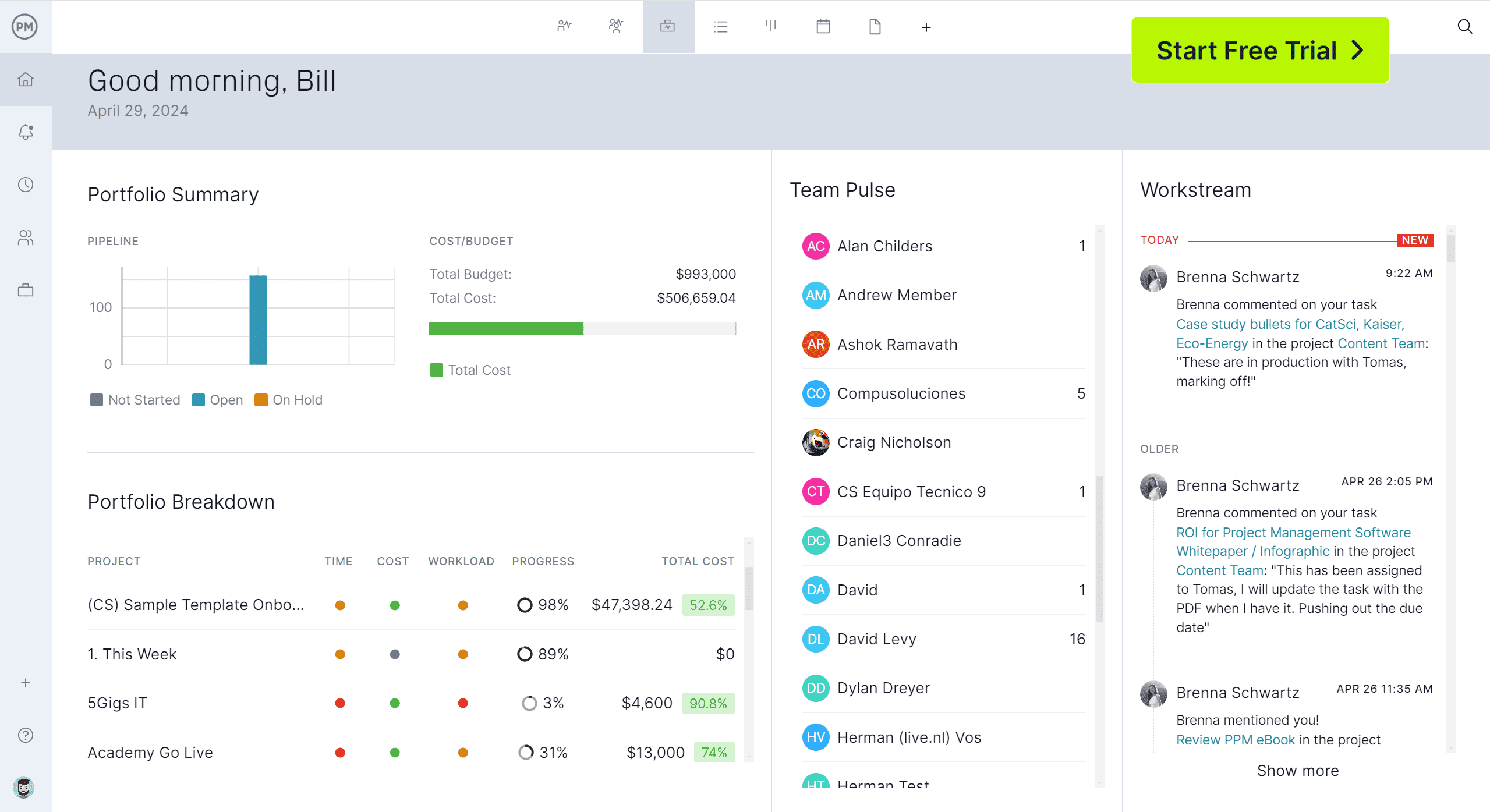
Why Is Construction Monitoring Important?
Construction monitoring provides ongoing assurance that the construction work meets the defined standards and project requirements. It helps detect deviations early, so issues can be resolved before escalating into costly delays or rework. This ongoing oversight promotes accountability, transparency and alignment between stakeholders. It also improves documentation, risk mitigation and overall quality control, ultimately protecting investments and ensuring the project’s objectives are met as intended.
When Does the Construction Monitoring Process Take Place?
The construction monitoring process begins during the construction phase, after pre-construction planning is complete and before post-construction activities such as commissioning and closeout begin. It spans the active building period when physical work is taking place on-site, continuing until the work is completed and verified.
In terms of the project management life cycle, construction monitoring occurs during the “execution” and “monitoring and control” phases. These phases involve implementing the plan and continuously tracking performance against baseline metrics to ensure successful delivery of the construction project.
What Are the Key Areas of Construction Monitoring?
Construction monitoring centers around the main components of a construction plan: schedule, budget, quality and scope of work. Each must be closely tracked to ensure project objectives are met. These elements are interconnected, so delays, excessive use of resources, overspending or quality issues in one area can quickly affect the others and disrupt overall progress.
Construction Schedules
Monitoring the construction schedule means regularly comparing actual progress against the planned timeline. This involves reviewing task completion, updating Gantt charts and holding weekly site meetings. By doing so, project managers can spot delays early and adjust resources or workflows to stay on track. Monitoring schedules is essential to ensure timely project delivery and reduce costly downtime caused by poor coordination or unexpected disruptions.
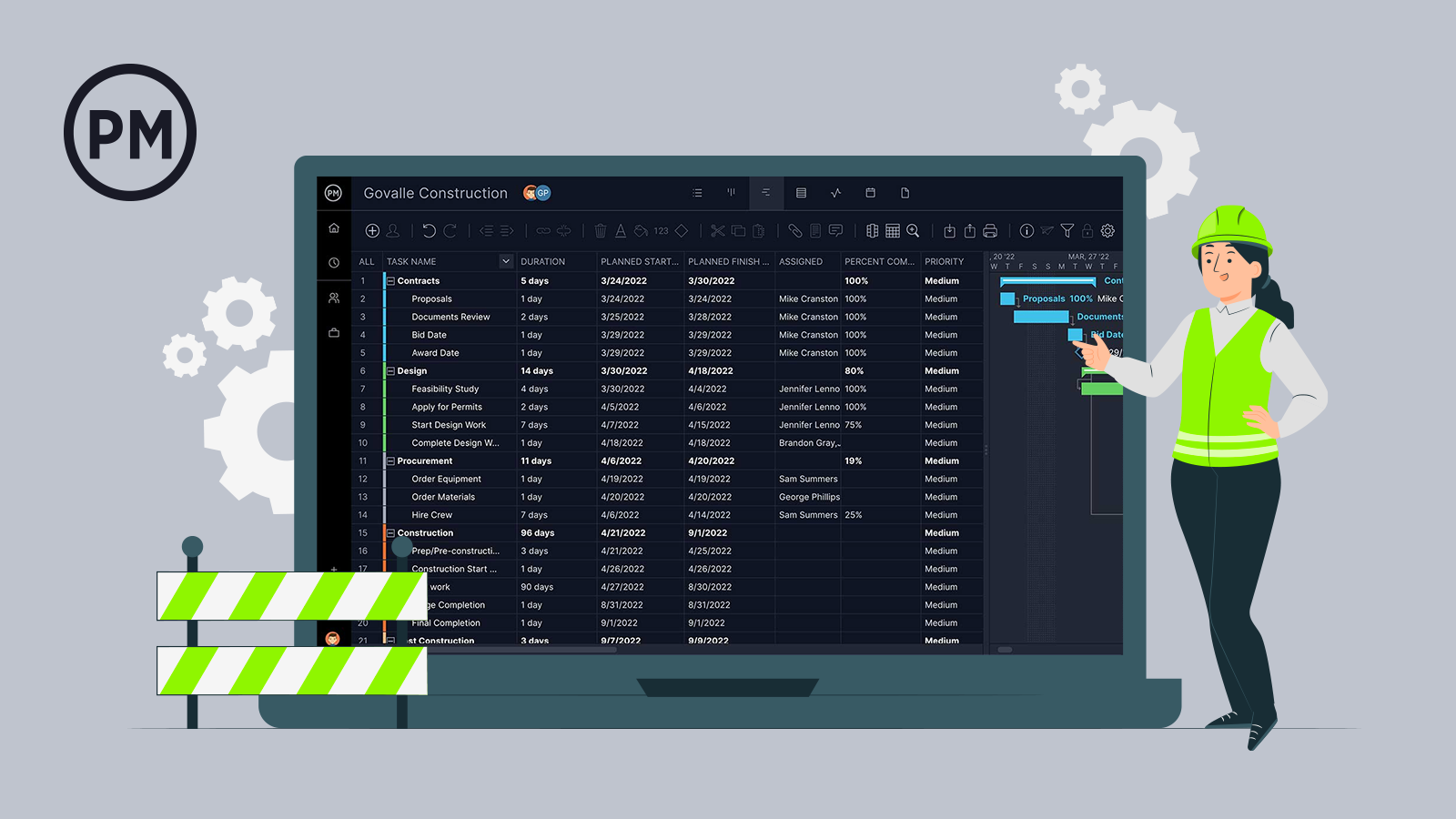
Get your free
Construction Schedule Template
Use this free Construction Schedule Template to manage your projects better.
Get the Template
Construction Budgets
To monitor a construction budget, project managers must track actual expenses against budgeted amounts, review invoices, approve payments and forecast future costs. This requires frequent updates to cost reports and coordination with procurement and finance teams.
Budget monitoring helps avoid cost overruns, manage change orders and keep the project financially viable. Without it, financial risks increase, overall project profitability may suffer or even worse, the project could fail due to lack of resources, which makes tracking budgets one of the most critical aspects of construction monitoring.
Construction Quality
Quality monitoring involves inspecting materials and workmanship to ensure they meet project specifications and building codes. Techniques include site inspections, material testing and reviewing contractor compliance with standards. This process helps identify defects early and avoid rework. Maintaining quality is vital for safety, longevity and client satisfaction. Poor quality control can lead to legal liabilities, reputational damage and increased maintenance costs.
Scope of Work (SoW)
Monitoring the scope of work requires ensuring all tasks and deliverables align with the original contract and project documentation. This involves reviewing progress reports, conducting audits and managing change requests. Keeping the scope in check prevents scope creep, delays and disputes. A well-monitored SoW ensures stakeholders stay aligned, resources are properly allocated and the finished work matches the agreed-upon objectives.

Resource Utilization
Monitoring resource utilization involves tracking how labor, equipment and materials are being used on-site compared to the project plan. This includes reviewing timesheets, delivery logs and equipment usage reports. Efficient resource use prevents bottlenecks, avoids over-allocation and ensures productivity remains high.
If resources are mismanaged, it can lead to schedule delays, cost overruns or idle labor. Proper construction monitoring helps project managers make timely adjustments and ensure the right resources are available when and where they’re needed most.
Construction Change Orders
Monitoring construction change orders requires logging all modifications to the original scope, tracking their approval status and updating schedules and budgets accordingly. Each change order should be documented, costed and communicated to the relevant parties.
Without proper oversight, change orders can lead to confusion, delays or disputes. Consistent monitoring ensures transparency, avoids scope creep and helps maintain control over project goals, timelines and financial expectations throughout the construction process. It also provides a clear audit trail for all changes made.
Construction Document Control
Monitoring document control involves managing the flow, storage and accessibility of project documents such as drawings, contracts, RFIs and reports. A centralized construction monitoring software should be used to ensure documents are versioned, approved and distributed correctly.
Related: 18 Best Construction Scheduling Software of 2025
Poor document control can cause miscommunication and rework. Strong monitoring ensures everyone is working with the latest information, which boosts efficiency, maintains compliance and reduces errors. It also protects the project from legal or contractual issues by keeping a reliable record of all correspondence.
Who Is Responsible for Construction Monitoring?
Construction monitoring is a collaborative effort involving multiple parties. Each stakeholder plays a distinct role in tracking progress, ensuring quality and resolving issues as they arise. While the construction project manager usually leads the process, owners, contractors and other professionals contribute by providing oversight, documentation and on-the-ground insights.
- Project Owner: Initiates the construction effort and has a vested interest in ensuring that it stays on schedule, on budget and up to standards. Their role in construction monitoring includes reviewing reports, approving major changes and maintaining communication with the project manager.
- General Contractor: Executes the construction work and plays a crucial role in day-to-day monitoring. They supervise subcontractors, manage resources and report progress to the project manager. Contractors also flag issues that could affect timelines or quality and submit updates on costs, safety and inspections.
- Construction Project Manager: The construction project manager is the central figure in the construction monitoring process. They coordinate with contractors, consultants and owners to track progress against the schedule, budget and scope. Their responsibilities include reviewing reports, updating plans, managing risks and ensuring documentation is accurate and timely.
Related: 32 Construction Documents (Templates Included)
Key Construction Monitoring Tools
There are many tools available to help monitor construction projects effectively. These tools provide real-time visibility into progress, performance and potential risks. Choosing the right combination of tools allows teams to track essential metrics, make data-driven decisions and ensure that construction activities stay aligned with the project plan, timeline and budget throughout the execution phase.
Gantt Charts
Gantt charts are essential for tracking construction schedules. They provide a visual timeline of tasks, durations and dependencies, helping teams identify progress and potential delays. In some cases, Gantt charts can also track task-specific costs and resource allocations, offering a more complete view of project performance.
Project managers can use Gantt charts to adjust timelines proactively and ensure that milestones are met as planned, making them a foundational tool for construction monitoring and effective schedule management.
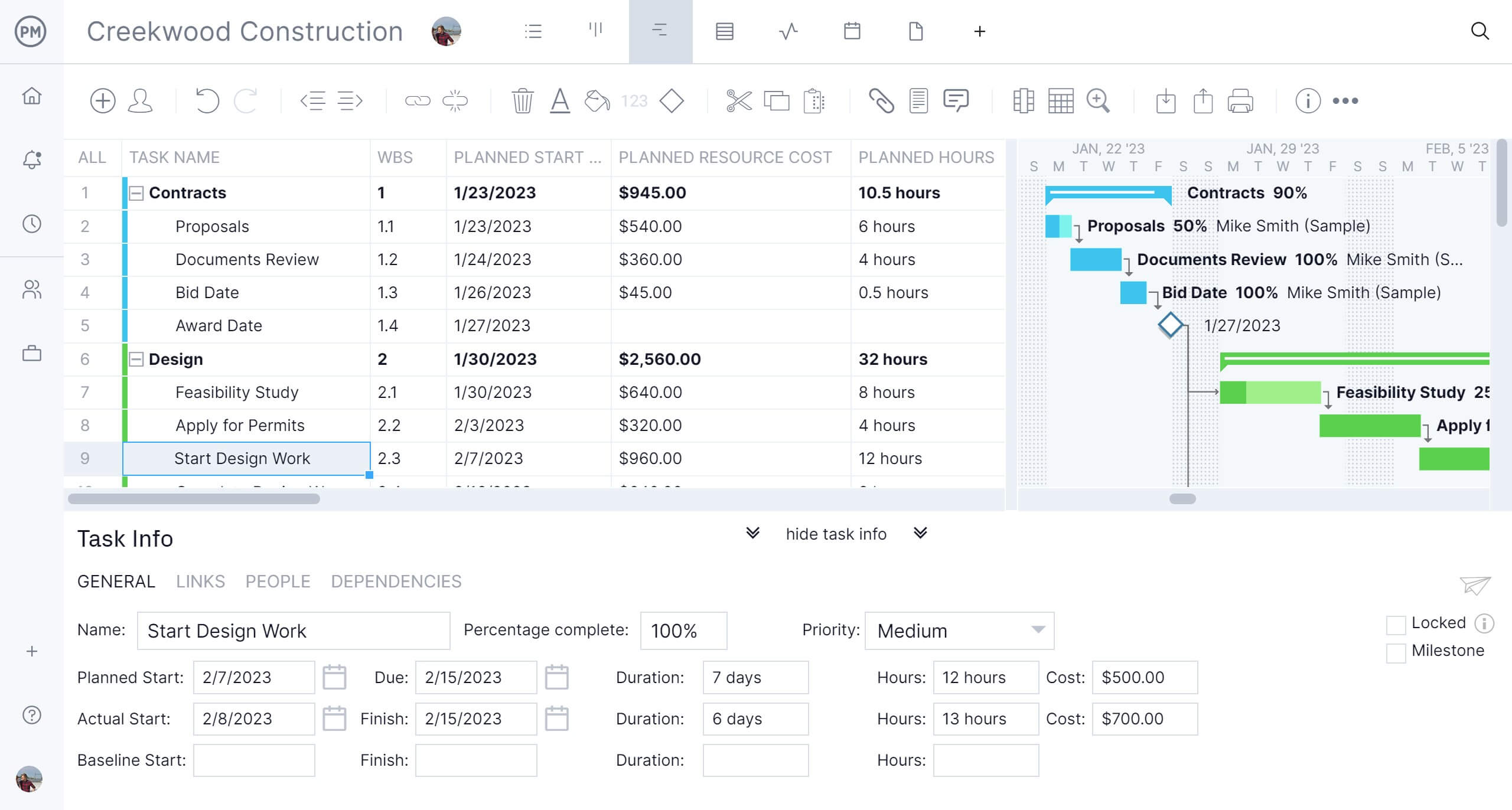
Project Dashboards
Project dashboards provide a real-time overview of the construction project’s health. These tools consolidate key metrics such as schedule progress, cost performance and risk status into a single interface. Dashboards allow teams to monitor cost and schedule variance at a glance, identify problem areas and make informed decisions quickly.
They are especially useful for reporting to stakeholders who need regular updates without diving into detailed documents or spreadsheets, making them practical and efficient for monitoring construction projects.
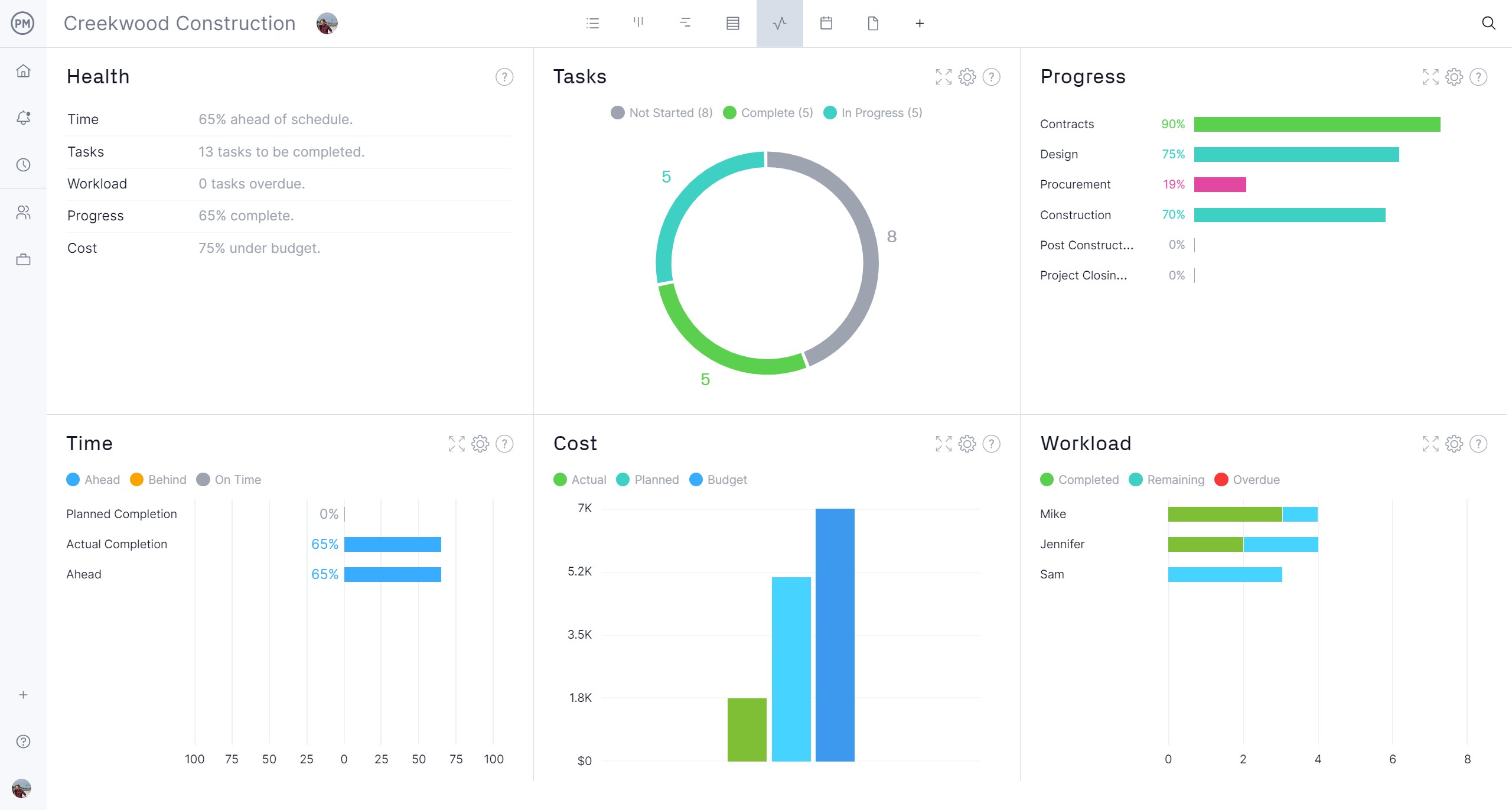
Construction Project Management Reports
Project management reports help communicate detailed updates throughout the construction monitoring process. Status reports and progress reports are the most common, but others include cost reports, risk reports and resource reports. These documents provide in-depth insights into project performance, helping teams identify issues, track changes and maintain accountability.
Project managers and stakeholders can review reports regularly to ensure alignment with goals, respond to risks promptly and maintain control over key areas such as budget, scope and schedule throughout the project lifecycle.
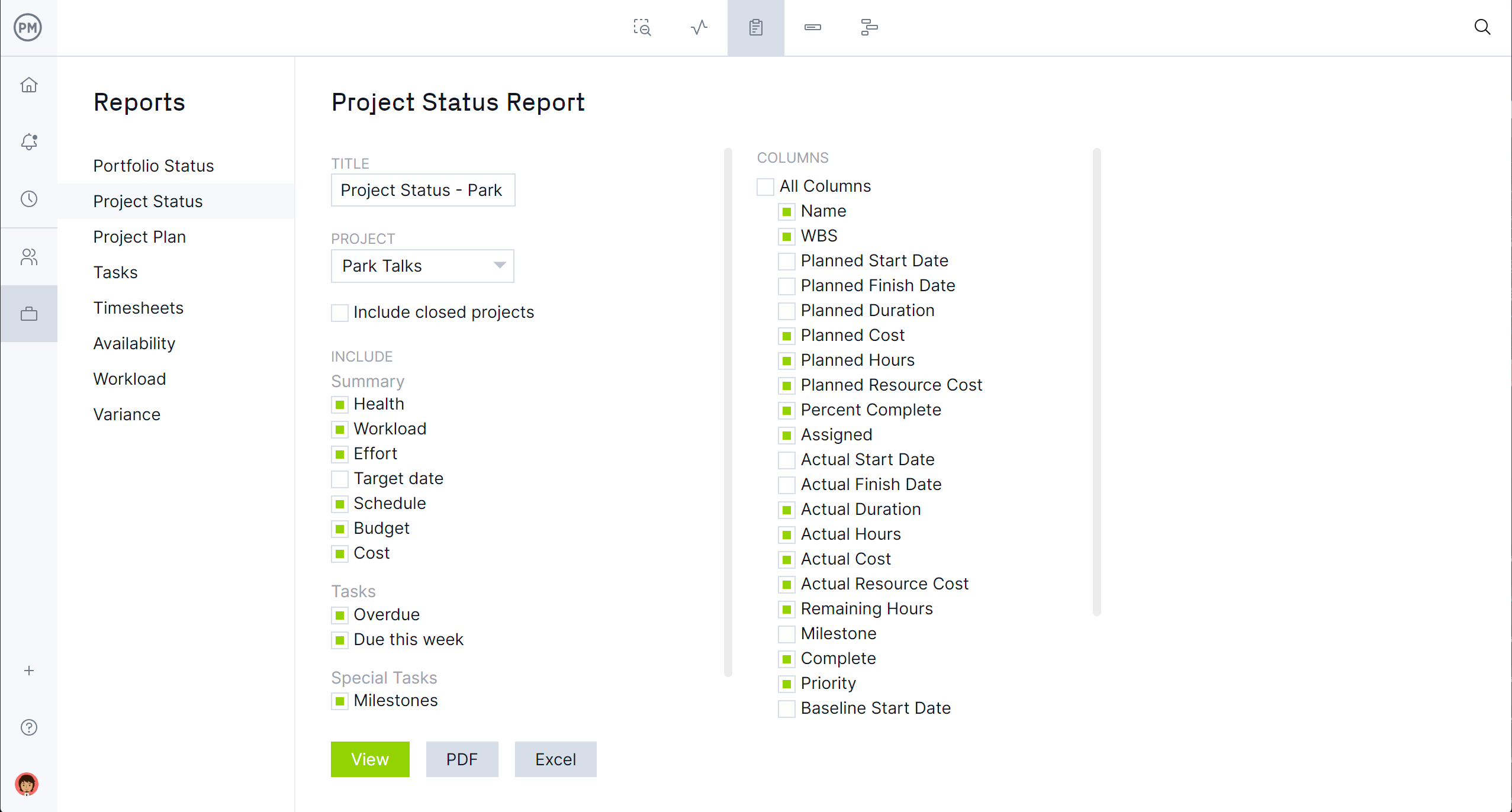
Construction Daily Log
The construction daily log records day-to-day site activities, including weather conditions, labor hours, deliveries, inspections and incidents. This document is essential for monitoring daily progress, ensuring accountability and keeping a historical record of events.
It also helps identify trends or recurring issues that may impact the schedule or quality of work. Daily logs provide transparency across the team and serve as valuable references when disputes arise or adjustments to the project plan are needed.
Free Construction Monitoring Templates
Not ready to upgrade to project management software and real-time construction monitoring? You can use templates. We have over 100 free project management templates for Excel and Word that cover all aspects of managing projects. Here are just a few that can provide a monitoring framework.
Construction Scope of Work Template
Download this free construction scope of work template to outline specific tasks, deliverables, timelines and responsibilities for a construction project. It helps with construction monitoring by clearly defining what work needs to be done, who is responsible and when it should be completed—reducing confusion, preventing scope creep and making it easier to track progress against agreed-upon goals.
Construction Schedule Template
Use this free construction schedule template to outline key tasks, milestones, deadlines and dependencies for a construction project. It helps with construction monitoring by providing a clear roadmap for tracking progress, identifying delays and coordinating crews and resources, ensuring the project stays on time and aligned with the overall plan.
Construction Budget Template
This free construction budget template is a detailed document that outlines estimated and actual costs for labor, materials, equipment and other project expenses. It helps with construction monitoring by tracking spending in real time, comparing it to the planned budget and identifying cost overruns early, enabling better financial control and informed decision-making throughout the project.
ProjectManager Has Real-Time Construction Monitoring
ProjectManager’s tracking features are better than static templates. They enhance project scheduling by providing real-time visibility into task progress, time spent, resource use and overall performance. As work begins, team members can update task statuses, log hours and submit timesheets, feeding live data into your Gantt chart, dashboards and workload views.
This constant feedback loop lets project managers spot a shift in deadlines, reassign resources or modify dependencies. Tracking tools such as automated alerts, progress bars on Gantt charts and variance reports ensure your schedule stays aligned with reality and helps you keep the project on time, within budget, and under control.
Stay Informed With Customizable Reports and Secure Timesheets
Get accurate, real-time insights into labor, costs and progress with our construction monitoring features. Customizable reports allow project managers to track key construction metrics—like task completion, budget usage, resource allocation and timeline variances—tailored to stakeholders’ needs. Whether it’s a high-level progress summary for executives or a detailed cost breakdown for site supervisors, these reports ensure everyone has the information they need to make timely, informed decisions.
Secure timesheets ensure that labor hours are accurately logged and approved, which is essential for tracking subcontractor work, managing payroll and staying compliant. Since timesheets feed directly into the project plan and budget, any deviations in labor costs or timelines are immediately visible, enabling proactive adjustments to keep construction projects on schedule and within budget.

Streamline Construction Monitoring With Resource Management
ProjectManager’s resource management features, workload chart and team page work together to give project managers full visibility into labor, equipment and task allocation. The resource tools ensure the right workers and assets are assigned based on availability and skill, while the workload chart visually highlights over- or under-assigned team members to prevent delays and optimize crew efficiency by balancing workloads.
The team page centralizes assignments, availability and performance tracking, improving coordination between field crews and office staff. Together, these tools help construction teams respond quickly to changes, balance workloads and keep projects on schedule and on budget.
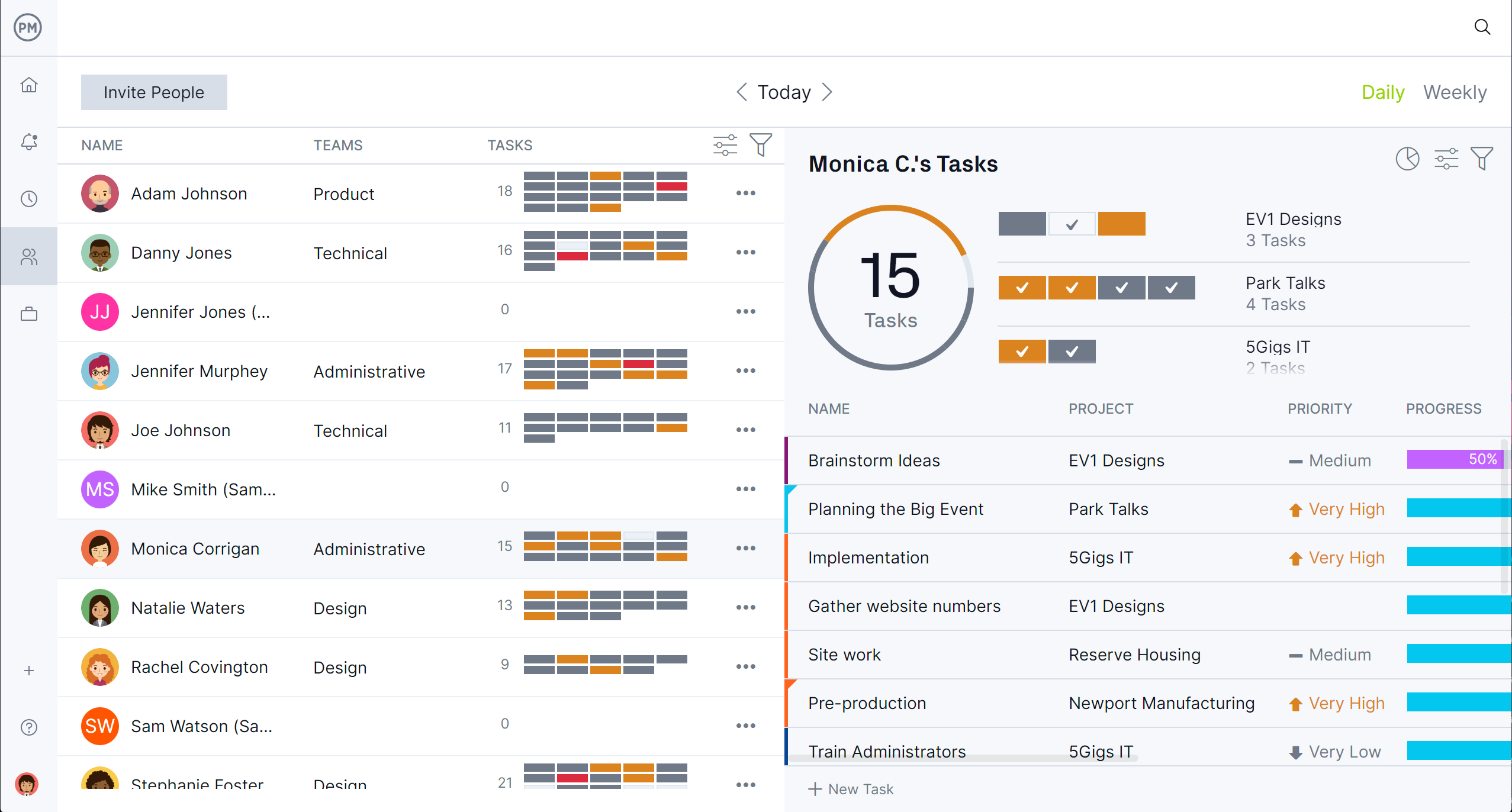
Related Construction Project Management Content
Construction monitoring is an important part of construction project management, but it’s only one piece of the larger picture. For more of those pieces, check out the links to recent articles below on the process of construction management, its phases and more.
- Construction Management: Process, Key Areas and Roles
- 20 Free Excel Construction Templates
- Construction Phases: Documentation, Templates & Steps
- 32 Construction Documents (Templates Included)
- Construction Reporting: Types of Construction Reports
- 14 Types of Construction Contracts: Pros, Cons & Best Practices
ProjectManager is online project and portfolio management software that connects teams whether they’re in the office or on the job site. They can share files, comment at the task level and stay updated with email and in-app notifications. Join teams at Avis, Nestle and Siemens who use our software to deliver successful projects. Get started with ProjectManager today for free.

